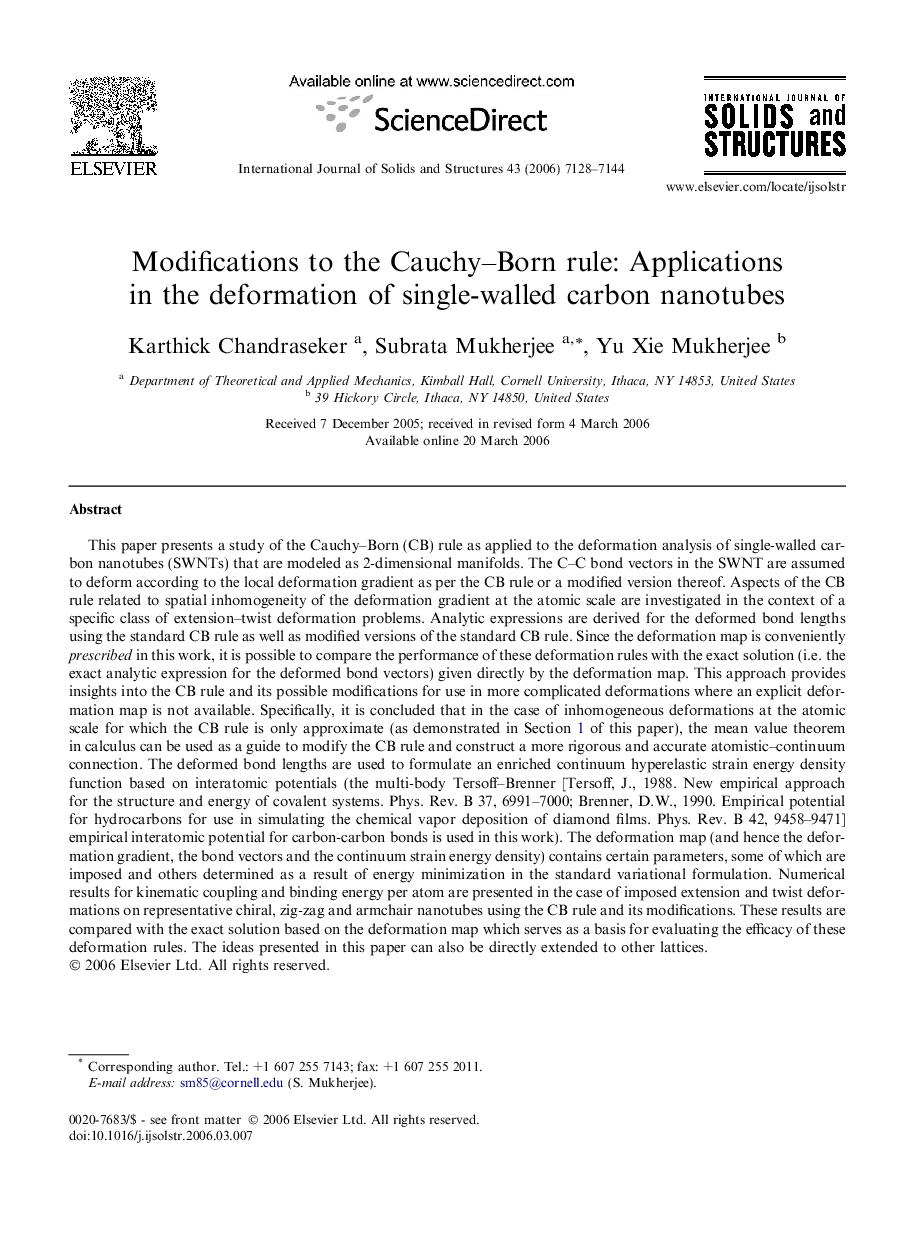| کد مقاله | کد نشریه | سال انتشار | مقاله انگلیسی | نسخه تمام متن |
|---|---|---|---|---|
| 280805 | 1430384 | 2006 | 17 صفحه PDF | دانلود رایگان |

This paper presents a study of the Cauchy–Born (CB) rule as applied to the deformation analysis of single-walled carbon nanotubes (SWNTs) that are modeled as 2-dimensional manifolds. The C–C bond vectors in the SWNT are assumed to deform according to the local deformation gradient as per the CB rule or a modified version thereof. Aspects of the CB rule related to spatial inhomogeneity of the deformation gradient at the atomic scale are investigated in the context of a specific class of extension–twist deformation problems. Analytic expressions are derived for the deformed bond lengths using the standard CB rule as well as modified versions of the standard CB rule. Since the deformation map is conveniently prescribed in this work, it is possible to compare the performance of these deformation rules with the exact solution (i.e. the exact analytic expression for the deformed bond vectors) given directly by the deformation map. This approach provides insights into the CB rule and its possible modifications for use in more complicated deformations where an explicit deformation map is not available. Specifically, it is concluded that in the case of inhomogeneous deformations at the atomic scale for which the CB rule is only approximate (as demonstrated in Section 1 of this paper), the mean value theorem in calculus can be used as a guide to modify the CB rule and construct a more rigorous and accurate atomistic–continuum connection. The deformed bond lengths are used to formulate an enriched continuum hyperelastic strain energy density function based on interatomic potentials (the multi-body Tersoff–Brenner [Tersoff, J., 1988. New empirical approach for the structure and energy of covalent systems. Phys. Rev. B 37, 6991–7000; Brenner, D.W., 1990. Empirical potential for hydrocarbons for use in simulating the chemical vapor deposition of diamond films. Phys. Rev. B 42, 9458–9471] empirical interatomic potential for carbon-carbon bonds is used in this work). The deformation map (and hence the deformation gradient, the bond vectors and the continuum strain energy density) contains certain parameters, some of which are imposed and others determined as a result of energy minimization in the standard variational formulation. Numerical results for kinematic coupling and binding energy per atom are presented in the case of imposed extension and twist deformations on representative chiral, zig-zag and armchair nanotubes using the CB rule and its modifications. These results are compared with the exact solution based on the deformation map which serves as a basis for evaluating the efficacy of these deformation rules. The ideas presented in this paper can also be directly extended to other lattices.
Journal: International Journal of Solids and Structures - Volume 43, Issues 22–23, November 2006, Pages 7128–7144